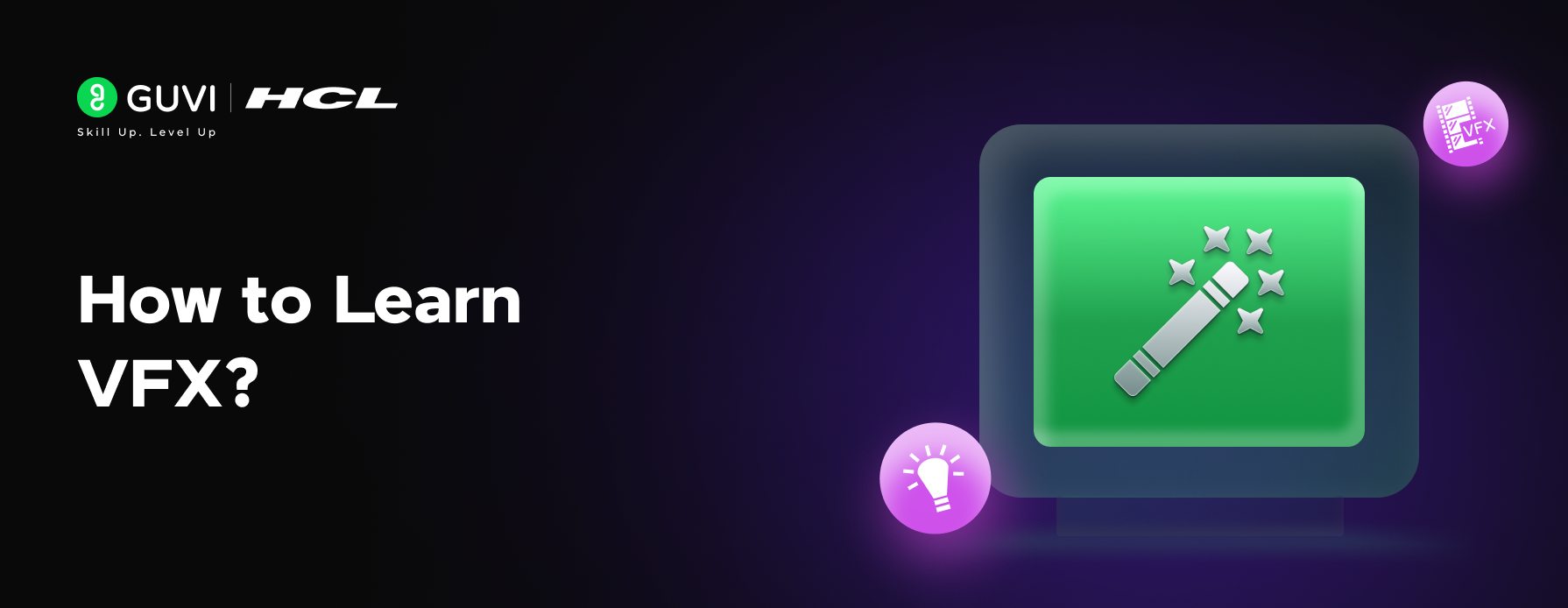
Have you ever watched those epic battle scenes in Marvel movies or seen the dragons come to life in Game of Thrones and wondered how they did it? These effects might look like magic, but they actually combine technical skills, creative vision, and industry-standard tools that you can learn with practice.
Learning VFX might feel daunting at first. You need to understand 3D modeling, compositing, and animation while mastering complex software. The good news is that you can build these skills gradually through practice and a clear learning path.
You might dream of working on blockbuster movies or want to create stunning visual effects for your own projects. This complete guide shows you everything you need to know about learning VFX. Let’s break this complex field into simple, useful steps.
Table of contents
- What is VFX and How it Works
- Different Types of Visual Effects
- How to Learn VFX (A Step-by-Step Guide)
- 1) Acquire Educational Qualifications
- 2) Essential Technical Foundation
- 3) Mastering VFX Production Pipeline
- 4) Software Expertise
- 5) Skills Required By Career Level
- Concluding Thoughts…
- FAQs
- What are the essential steps to start learning VFX?
- How long does it take to learn VFX?
- What are the key skills needed for a career in VFX?
- How can I create an effective VFX portfolio?
- What are some good platforms to showcase a VFX portfolio?
What is VFX and How it Works
Visual Effects (VFX) creates or manipulates imagery beyond live-action shooting. Unlike special effects captured on camera, VFX combines computer-generated elements with live-action footage during post-production.
This creates realistic environments and effects that would be impossible, dangerous, or too expensive to film.
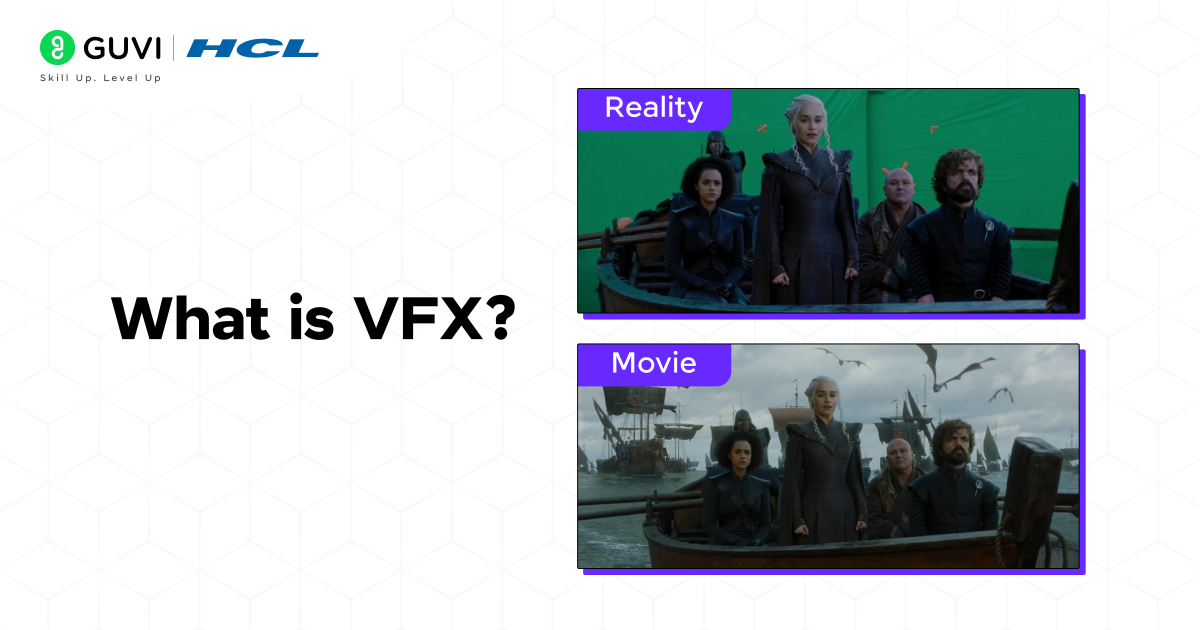
The VFX workflow combines live-action footage with enhanced imagery to create ultra-realistic environments, characters, and effects. This needs careful planning before production and precise execution afterward.
Different Types of Visual Effects
VFX includes several specialized techniques:
- Computer-Generated Imagery (CGI): Creates entirely digital elements, from fantastical creatures to entire worlds
- Compositing: Combines multiple images into a seamless final shot, often using green screen technology
- Motion Capture: Transforms actor performances into digital characters
- Particle Systems: Generates effects like fire, rain, or explosions
How to Learn VFX (A Step-by-Step Guide)
Now, it’s time for the section you’ve actually been waiting for, the complete how-to on learning VFX. I have made sure to provide a detailed guide under all steps and across all tools. I hope you find it to be helpful.
1) Acquire Educational Qualifications
A strong educational foundation is critical for aspiring VFX artists. While creativity and technical skills are paramount, formal education equips candidates with industry knowledge and structured learning, providing a significant edge in this competitive field.
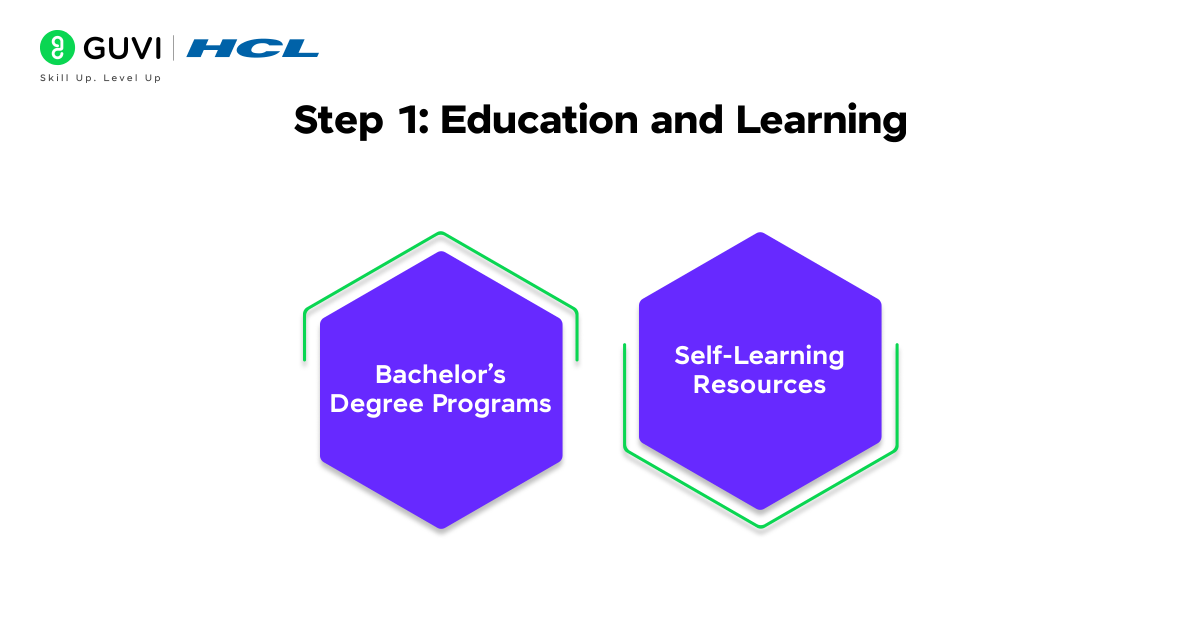
Educational Pathways:
1. Bachelor’s Degree Programs:
Pursue a bachelor’s degree in fields like:
- Animation and Visual Effects: Comprehensive training in design, animation, and compositing.
- Computer Science with a Focus on Graphics: Ideal for those interested in technical roles like simulation or tool development.
- Digital Media or Fine Arts: Offers creative exposure to storytelling and aesthetics.
Popular courses include:
- B.Sc. in Animation and VFX
- B.A. in Digital Media Design
- B.F.A. in Multimedia Arts
Duration: Typically 3-4 years.
Cost: Ranges from ₹2,00,000 to ₹8,00,000 depending on the university.
Self-Learning Resources:
- Online Platforms:
Platforms like GUVI, Coursera, Udemy, and LinkedIn Learning provide affordable, flexible learning options tailored for beginners and professionals.- Advantages: Self-paced, affordable, and access to global expertise.
- Popular Courses:
- GUVI’s VFX Course with Gen AI is a cutting-edge program tailored for aspiring and professional VFX artists looking to master traditional VFX skills alongside the power of generative AI.
- Houdini FX Mastery (Udemy): Comprehensive Houdini training.
- VFX Compositing with Nuke (LinkedIn Learning): Focused on industry-standard compositing.
- Books and Tutorials:
- Books:
- The VES Handbook of Visual Effects: A technical guide for VFX professionals.
- Digital Compositing for Film and Video: A definitive compositing reference.
- Tutorials:
- YouTube channels like Film Riot and Action VFX offer free VFX walkthroughs.
- Books:
2) Essential Technical Foundation
A successful career in VFX requires a solid technical foundation that covers specific software skills, programming knowledge, and hardware capabilities. These requirements will help you create a well-laid-out approach to skill development.
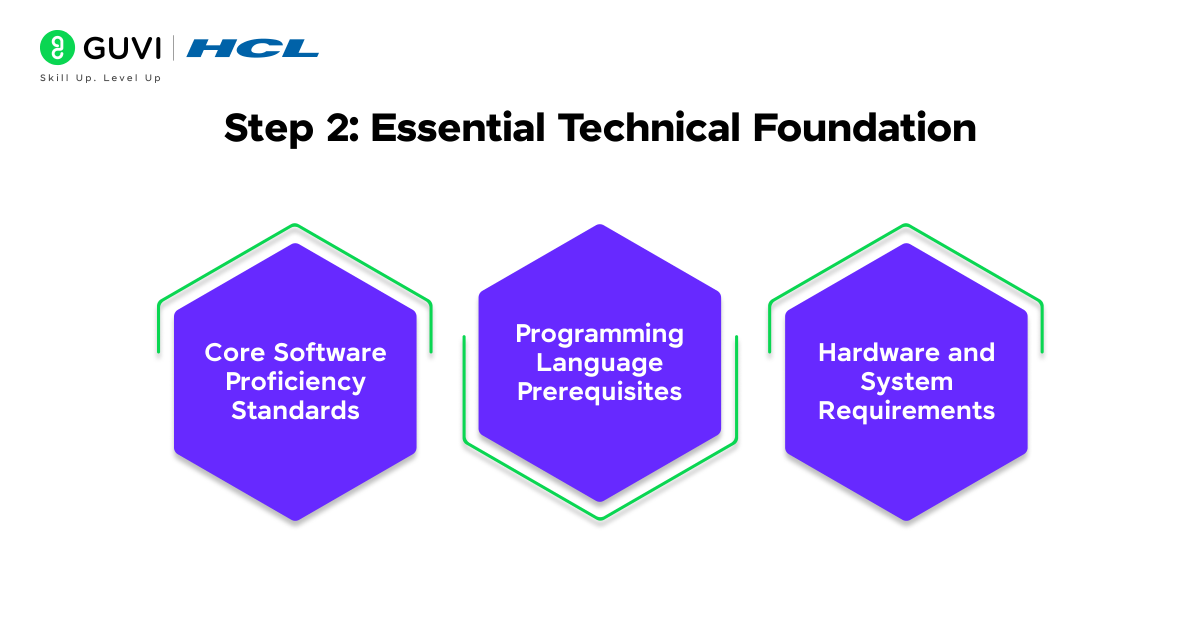
2.1) Core Software Proficiency Standards
Your VFX experience starts with becoming skilled at industry-standard software tools. Here’s a detailed breakdown of essential software skills:
| Software Category | Core Applications | Primary Use |
| 3D Animation & Modeling | Maya, Houdini | Asset creation, animation |
| Compositing | Nuke, After Effects | Final composition, effects |
| Texturing | Substance Painter | Asset texturing |
| Game Engines | Unreal Engine | Real-time rendering |
2.2) Programming Language Prerequisites
Programming knowledge is vital for VFX artists today. You need to be proficient in:
- Python: The main scripting language used in major VFX software platforms including Nuke, Maya, and Houdini. Its versatility makes it essential to automate tasks and develop pipelines.
- C++: This language becomes especially important in technical director roles and pipeline development.
2.3) Hardware and System Requirements
Your workstation must meet specific requirements to handle VFX work effectively:
Processor & Memory:
- Intel i9 processor (3.5GHz or higher) with 8-32 cores
- Minimum 32GB RAM, with 64GB recommended for complex simulations
Storage & Graphics:
- Primary SSD and secondary SSD for render scratch (NVMe recommended)
- GPU with specialized video card for rendering capabilities
System Configuration:
- Windows 10 Professional for optimal software compatibility
- Reliable backup systems to protect project data
- Power supply with sufficient wattage to maintain system stability
Your hardware setup should focus on rendering capabilities and system stability. These factors directly affect how well you handle complex VFX tasks. Make sure all components work with your main software tools and rendering engines.
3) Mastering VFX Production Pipeline
A VFX artist’s career growth depends on mastering the VFX production pipeline. A well-laid-out pipeline will give a smooth workflow from concept to final delivery, making it a vital skill you need to progress.
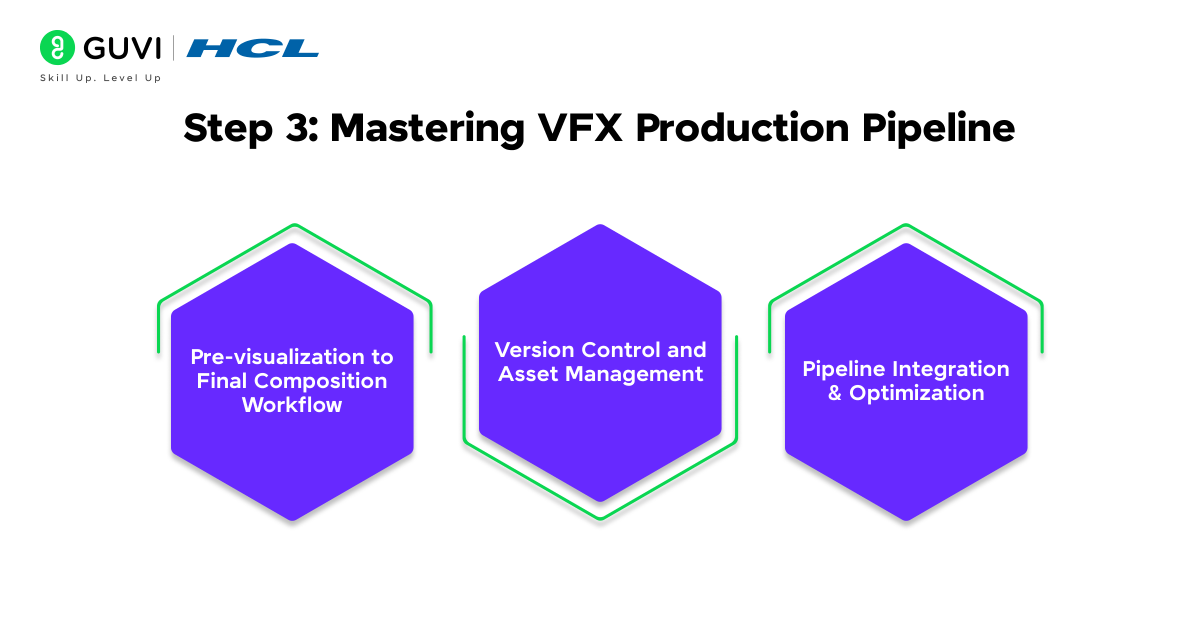
3.1) Pre-visualization to Final Composition Workflow
Your journey through the VFX pipeline starts with pre-visualization. You’ll create low-poly 3D models and scene representations that map out complex sequences. The workflow follows this structure:
| Pipeline Stage | Key Activities | Tools/Skills Required |
| Pre-visualization | Scene blocking, camera setup | Unreal Engine, Maya |
| Asset Creation | 3D modeling, texturing | Substance Painter, ZBrush |
| Animation/Simulation | Character/object animation | Houdini, Maya |
| Compositing | Final integration, color correction | Nuke, After Effects |
3.2) Version Control and Asset Management
Project organization and collaboration need proper version control. Version control systems help you track changes, manage iterations, and arrange team efforts. The main benefits are:
- Smooth collaboration in a variety of teams
- Automatic file versioning and iteration tracking
- Secure backup of creative assets
- Efficient resource management across projects
3.3) Pipeline Integration and Optimization
Production efficiency improves when you optimize the VFX pipeline. Modern pipelines need integration with various tools and platforms. These optimization strategies deserve your attention:
Cloud-based platforms should connect workflows and data throughout the production lifecycle. This integration makes live project tracking and resource optimization possible, which helps meet tight deadlines and budget constraints.
USD (Universal Scene Description) workflows offer technical optimization advantages. They allow smooth translation between different software environments. This approach cuts down data translation overhead and keeps complex scene hierarchies intact across your pipeline.
The VFX industry demands continuous improvement. You should assess and refine pipeline processes regularly. Focus on automating repetitive tasks and streamlining asset management to boost overall production efficiency.
4) Software Expertise
Knowing how to use the right software tools at each career stage is vital to your progression in the VFX industry. Your trip from junior to senior level needs strategic skill development and continuous learning of new tools and technologies.
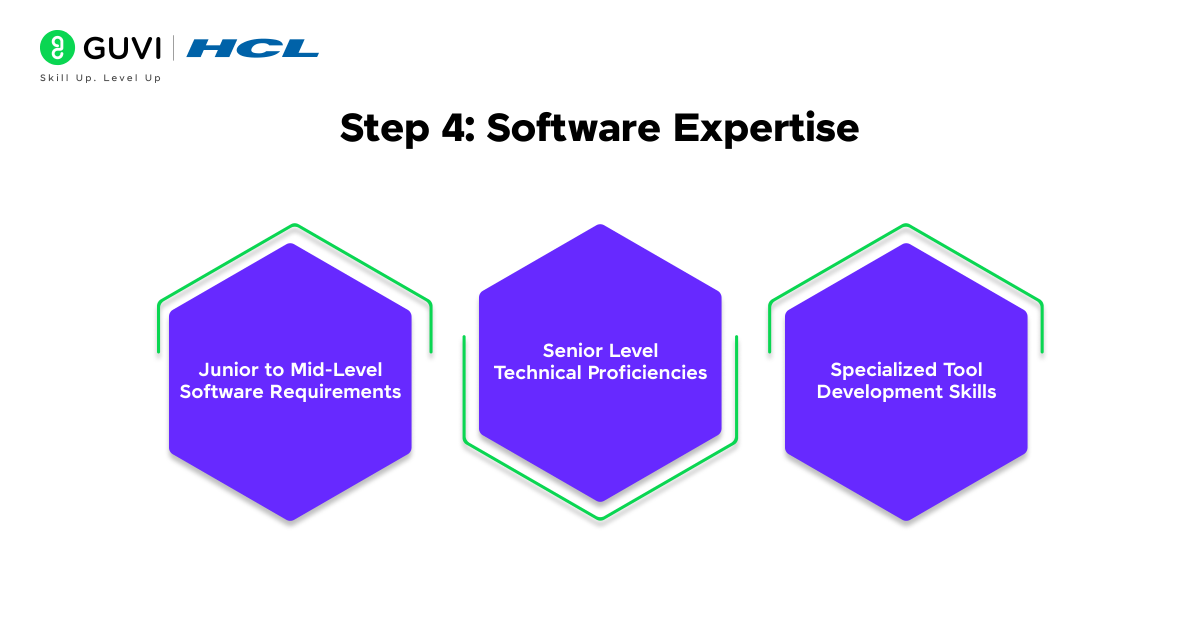
4.1) Junior to Mid-Level Software Requirements
Starting your VFX career requires proficiency in industry-standard software. Junior artists work with After Effects, Cinema 4D, Nuke, or Houdini, based on their specialization. Junior artists typically earn between ₹ 3 LPA to ₹ 12+ LPA.
| Career Level | Required Software | Experience | Average Annual Salary (₹) |
| Junior | After Effects, Maya, Nuke | 0-3 years | ₹3,00,000 – ₹5,00,000 |
| Mid-Level | + Houdini, Python scripting | 3-7 years | ₹5,00,000 – ₹8,00,000 |
| Senior | Advanced Houdini, Unreal Engine, AI tools | 7+ years | ₹8,00,000 – ₹12,00,000+ |
- Junior-Level Artists (₹3-5 LPA):
- Roles: Roto Artist, Junior Compositor, Junior Animator.
- Typical Tasks: Basic compositing, rotoscoping, assisting in rendering tasks.
- Software Proficiency: After Effects, Nuke, Maya.
- Insights: Entry-level professionals working in small-to-mid-sized studios generally start at ₹25,000 to ₹40,000 per month.
- Mid-Level Artists (₹5-8 LPA):
- Roles: Mid-level Compositor, Effects Artist, Animator.
- Typical Tasks: Handling key shots, particle simulations, and lighting.
- Software Proficiency: Houdini, Maya, Python scripting.
- Insights: Mid-level professionals contribute to complex sequences and can work independently on substantial tasks.
- Senior-Level Artists (₹8-12 LPA):
- Roles: Senior VFX Artist, Technical Director, Simulation Artist.
- Typical Tasks: Leading teams, managing the VFX pipeline, or handling high-complexity effects (e.g., explosions, water simulations).
- Software Proficiency: Advanced Houdini, Unreal Engine, AI-driven tools.
- Insights: Professionals in this tier are highly sought after, especially for projects in feature films or gaming.
Mid-level advancement requires:
- Strong grasp of VEX and beginner-level Python programming
- Knowing how to design builds that junior artists can use
- Complete knowledge of the VFX pipeline
4.2) Senior Level Technical Proficiencies
Senior positions demand mastery of multiple technical domains. You need at least 5 years of experience and should demonstrate:
- Advanced Pipeline Knowledge: Knowing how to handle VFX for entire projects independently
- Technical Leadership: Skills to mentor junior artists and make confident decisions
- Software Mastery: Expertise in at least three core areas: particles, scripting, shading, animation, or modeling
4.3) Specialized Tool Development Skills
Tool development becomes more important as you advance. Focus on:
| Skill Area | Tools/Languages | Application |
| Pipeline Development | Python, VEX | Workflow automation |
| Asset Management | Shotgun, Deadline | Production tracking |
| Custom Solutions | PyQT, C++ | Tool creation |
Your learning should include updates with the latest versions of core software like Houdini. This helps you understand new shortcuts, SOPs, and improvements to simulation and lighting integration. Growth accelerates when you participate regularly in training events and masterclasses – aim for 1-5 tutorials monthly in your first three years.
Note that adaptability and strong communication skills matter as much as technical proficiency. Your career progression substantially depends on how well you work in teams and handle feedback professionally.
5) Skills Required By Career Level
A successful career in the visual effects industry requires meeting specific technical standards at each career stage. These requirements are the foundations of effective professional development planning and help you advance through the VFX industry ranks.
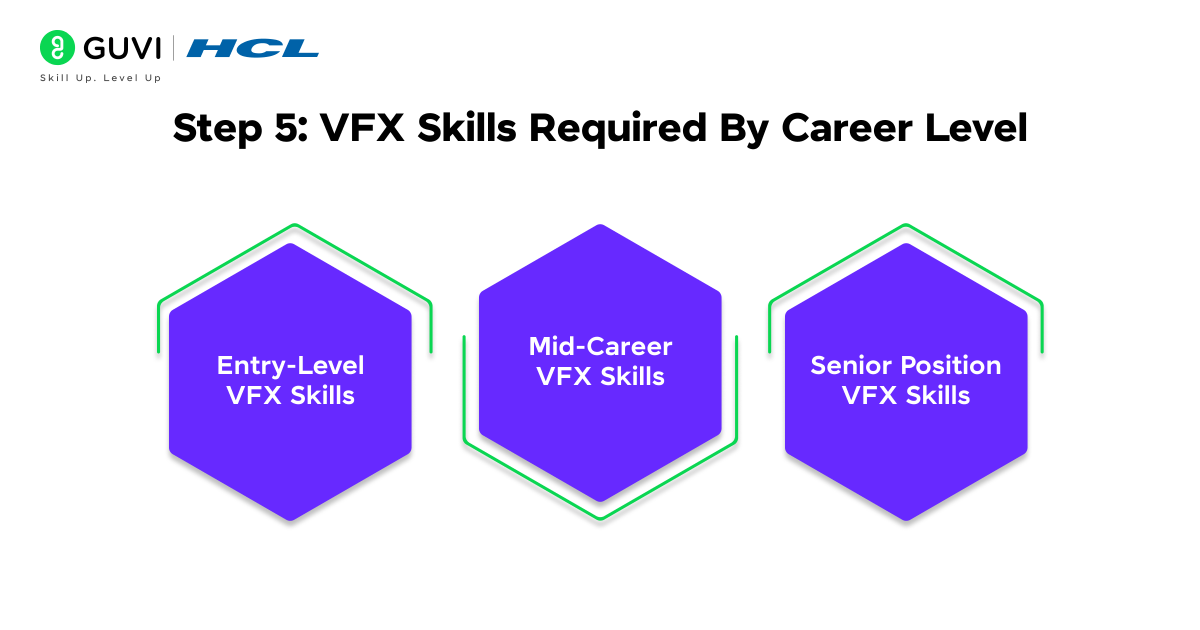
5.1) Entry-Level VFX Skills
Your first step is to become skilled at fundamental technical skills. The VFX industry needs highly qualified professionals, and 86% of them hold a degree. Entry-level positions typically require:
| Technical Skill Area | Required Proficiency |
| Software Mastery | After Effects, Maya, Basic Compositing |
| Programming | Basic Python Scripting |
| Creative Skills | Drawing, Visual Aesthetics |
| Technical Foundation | Photography, Anatomy |
5.2) Mid-Career VFX Skills
Technical expertise should expand substantially as you move to mid-level positions, typically after 3-5 years. Mid-level VFX artists earn approximately $60,000 to $80,000 annually. Key technical requirements include:
- Advanced Software Proficiency: Mastery of industry-standard tools like Nuke, Houdini, and Maya
- Technical Skills Development:
- Particle and fluid simulation expertise
- Advanced compositing techniques
- Pipeline integration capabilities
- Asset management proficiency
5.3) Senior Position VFX Skills
Senior positions just need detailed technical mastery and typically require 5+ years of production experience. Your technical portfolio should demonstrate:
| Senior Level Requirements | Technical Specifications |
| Software Expertise | Unity VFX Graph, Unreal Niagara |
| Programming Skills | HLSL/GLSL Shader Development |
| Technical Leadership | Pipeline Development, Team Management |
| Specialized Knowledge | VR/AR Content Creation |
This level requires an excellent sense of scale, timing, detail, form, texture, and color. Your technical abilities should include:
- Advanced understanding of animation, modeling, and texturing pipelines
- Skills to break down visual effects from various sources
- Expertise in performance optimization and technical limitations
- Proficiency in generating assets across multiple software platforms
The progression path requires continuous learning because the VFX industry evolves constantly with new technologies and techniques. Your technical skills must adapt to meet changing industry standards while maintaining core competencies in traditional VFX principles.
Concluding Thoughts…
Creating visual effects combines technical expertise with artistic vision. You need dedication to become skilled at multiple specialized skills. Your experience in VFX begins with understanding fundamental concepts and software mastery. The process concludes with creating complex visual effects through optimized workflows.
Professional VFX work needs practical experience with industry-standard tools like Maya, Nuke, and Houdini. You should also master techniques from basic compositing to advanced particle simulations. A systematic approach to building these skills and well-laid-out workflows will help you create impressive effects for your portfolio.
I hope this article has been of help to you regardless of the state your career is in and if you have any doubts about the article, reach out to me in the comments section below.
FAQs
Begin by choosing a VFX software, such as Blender or After Effects. Learn the basics through tutorials and online courses. Practice creating simple effects and gradually move to more complex projects. Build a demo reel to showcase your skills, and consider learning some coding for automation.
Learning VFX is a gradual process. While you can grasp basic concepts within a few weeks, mastering advanced techniques takes time and consistent practice. Expect to spend several months to a year developing proficiency in various VFX skills.
Essential skills for VFX include proficiency in industry-standard software like Maya, Nuke, or Houdini. You should also have a strong understanding of 3D modeling, texturing, animation, and compositing. Creativity, problem-solving abilities, and attention to detail are crucial soft skills in this field.
Focus on quality over quantity when selecting projects for your portfolio. Include a variety of work that demonstrates your technical skills and creativity. Organize your portfolio with clear categories, detailed breakdowns of complex effects, and information about the software and techniques used. Keep your showreel concise, around 2-3 minutes long, and lead with your strongest work.
ArtStation is an industry-standard platform that offers excellent networking opportunities and a built-in job board. Behance provides a large creative audience and free hosting. Vimeo is ideal for professional video hosting with high-quality playback and easy integration with portfolio websites. Choose a platform that best suits your needs and regularly update your portfolio to reflect your growth and current skills.





















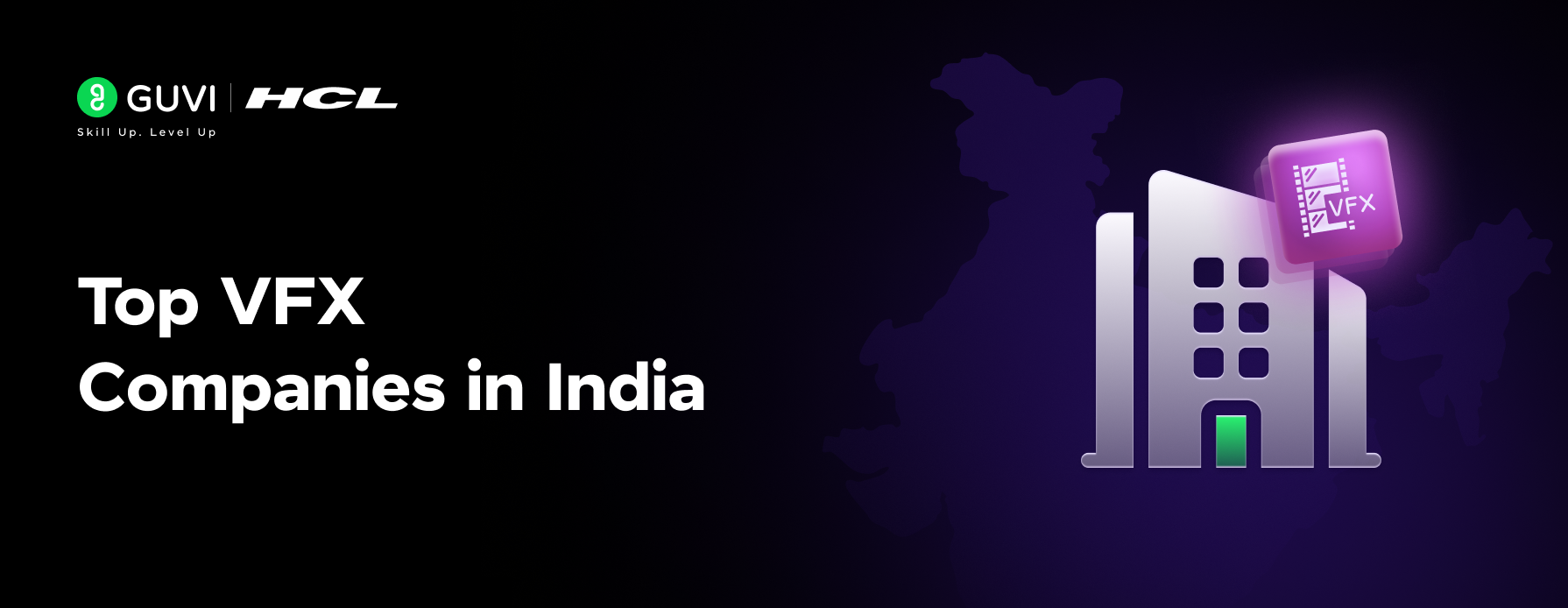

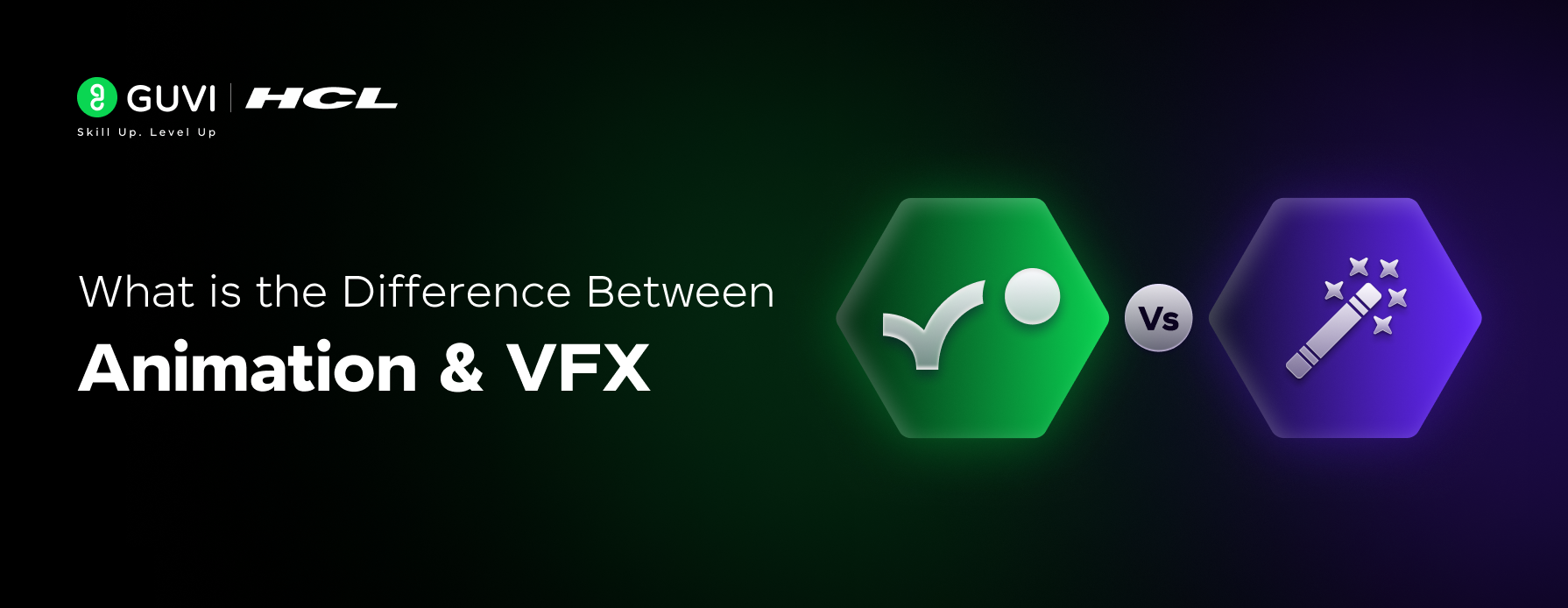
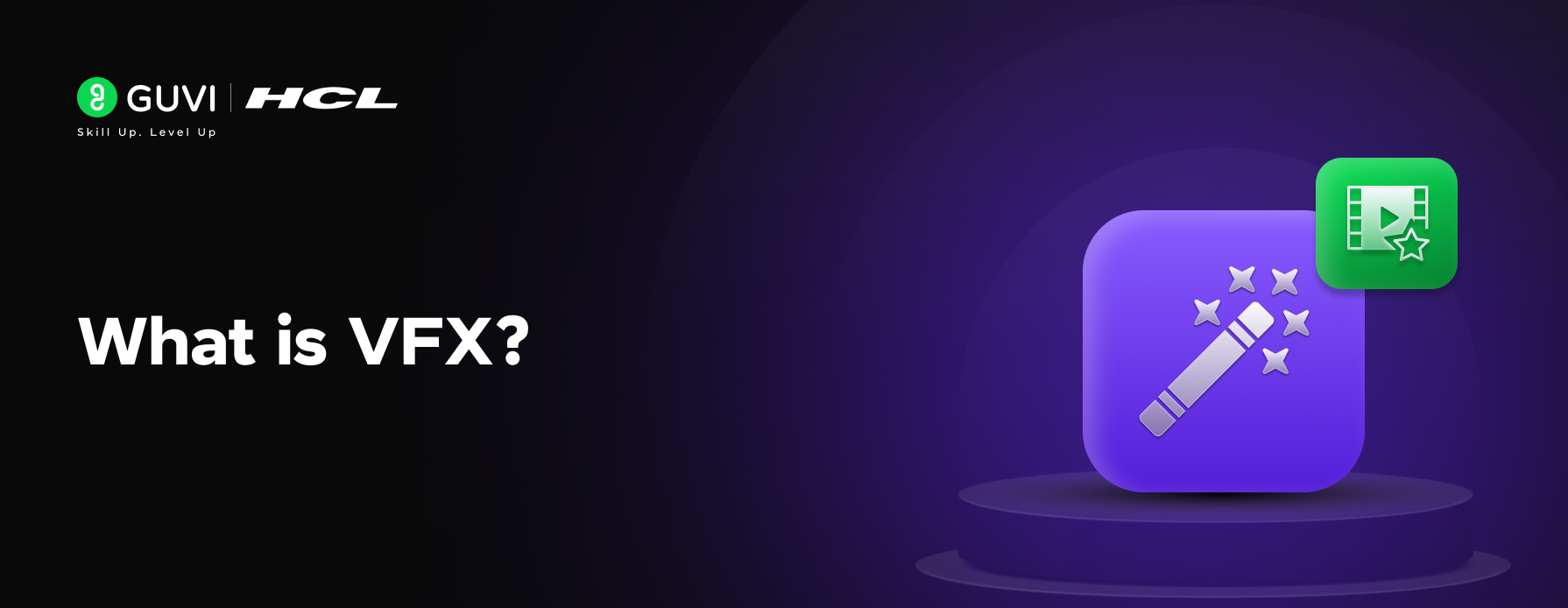
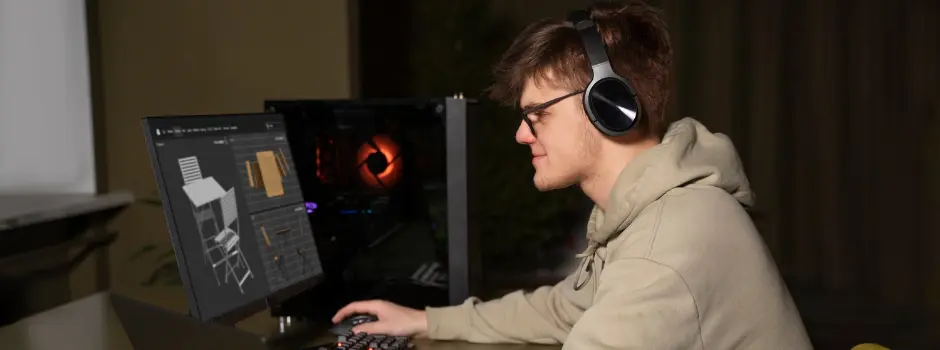
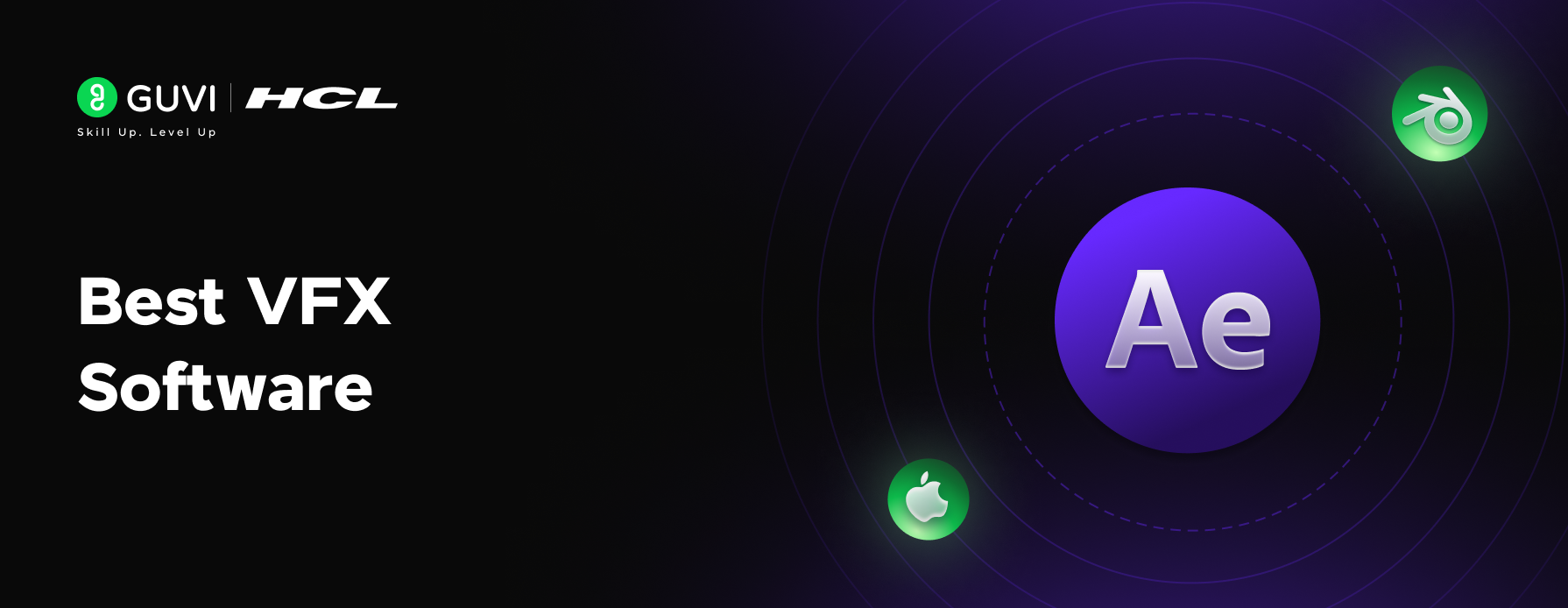
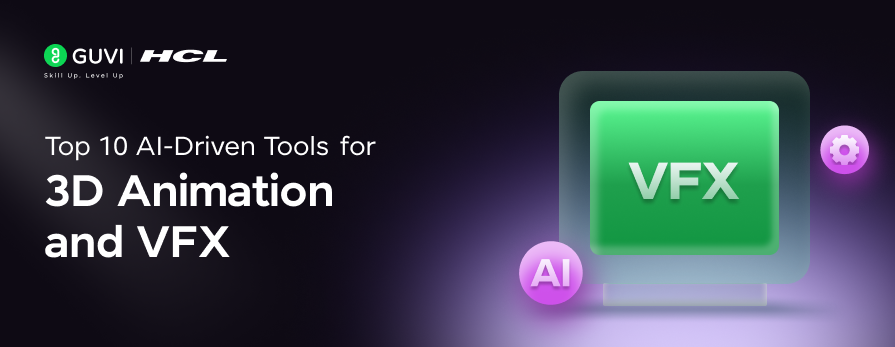
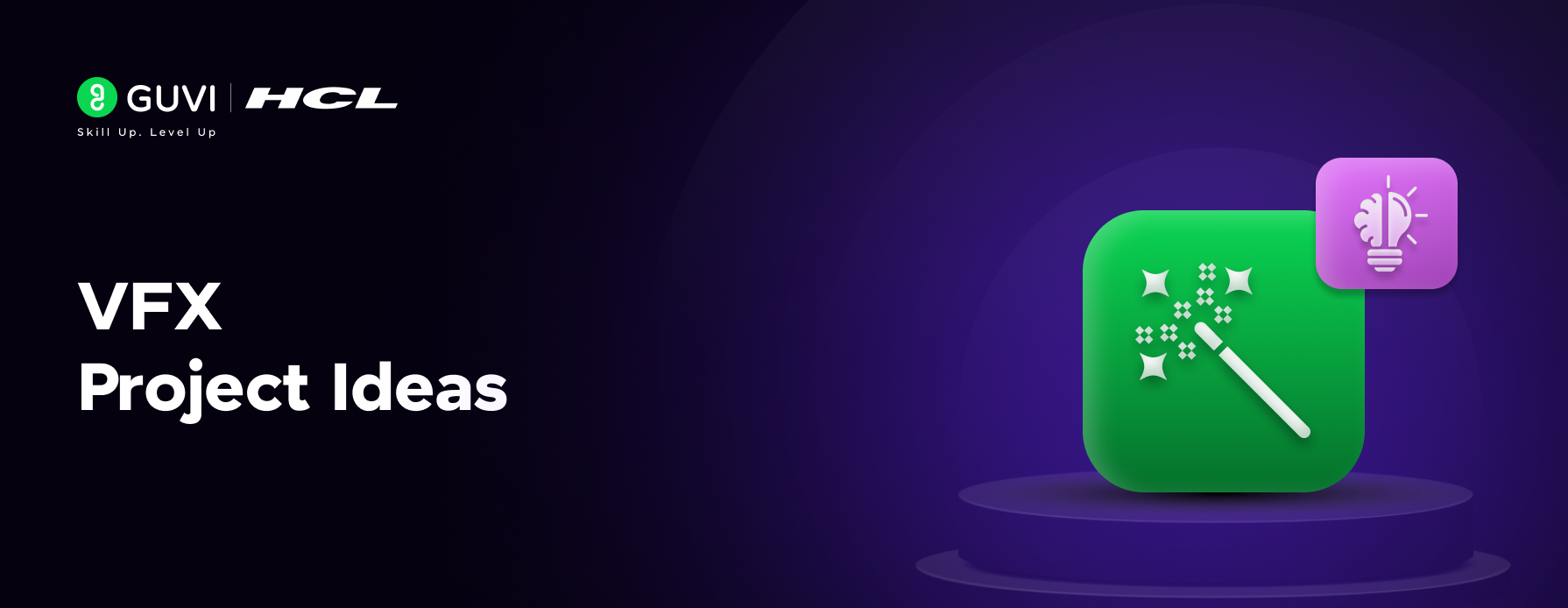
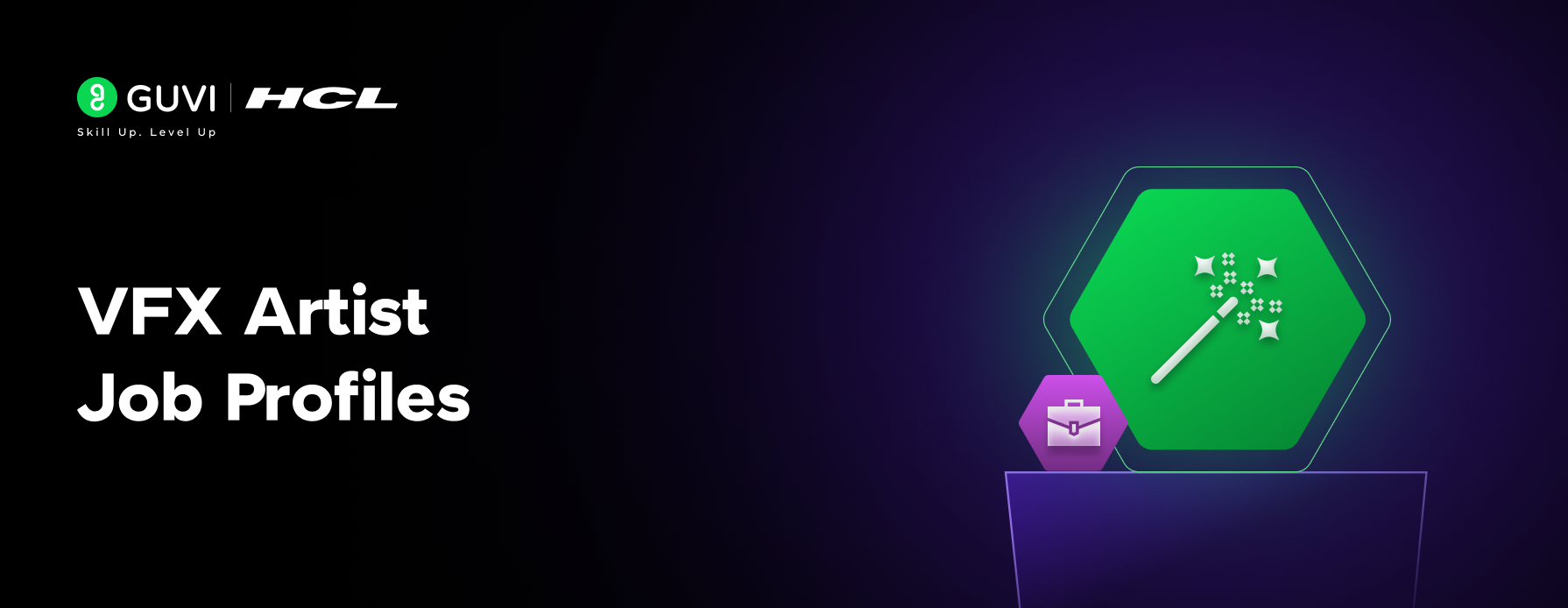

Did you enjoy this article?